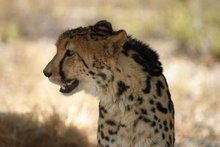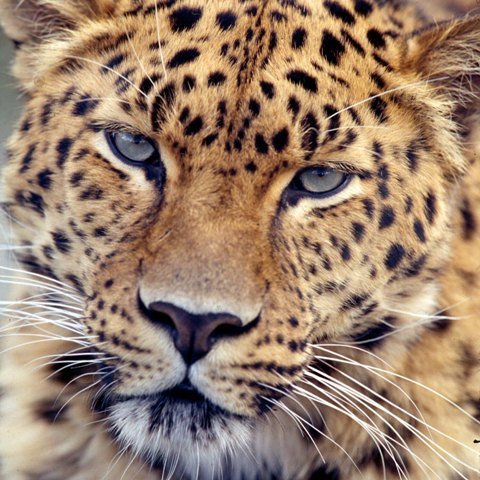 Its common name comes from the Amur River. other common names for this subspecies are "Far East Leopard" and the "Siberian Leopard".
Its common name comes from the Amur River. other common names for this subspecies are "Far East Leopard" and the "Siberian Leopard".
This species was originally distributed throughout the Korean Peninsula, northeastern China, and southeastern Russia. the majority of its range overlapping with that of the Siberian Tiger also known as the Amur Tiger. But today, it is extremely close to extinction with only 25 to 34 known individuals remaining in the Sikhote-Alin mountains of southern Russia (only 6 of these are female), while it is estimated that at least 100 are needed if the species is to avoid extinction. A few individuals are thought to remain on the Kaema Plateau and Beakdusan of North Korea, but the status of the species here is unknown. Habitat destruction and the fur trade have diminished its numbers dramatically, and have resulted in the animal becoming the rarest extant member of the feline family on the planet.

The Amur Leopard stands apart from the ten other living subspecies of leopard with its longer fur and legs, helping it better cope with the cold, harsh conditions of the taiga.
The fur is golden orange and about 2.5 cm long during the summer but grows to around 7 cm during the winter, when it also lightens to a pale cream colour. Its fur has larger and more widely spaced rosettes than other leopards.
While the Amur Leopard inhabits the same area as the Siberian Tiger, it has received far less attention from the media and from charities. The Amur leopard is the rarest of all the big cats, and is in immediate danger of dying out in the wild. It is suffering from habitat loss and is especially vulnerable to natural disasters, such as fire, because of extensive habitat fragmentation. Amur Leopards prefer to live in forested territory, but most of its remaining territory is surrounded by farms and villages, making poaching easier.

Russian plans for building an oil pipeline through the last remaining habitat of the Amur leopard were recently redirected to a safer route after pressure from the WWF and other environmental organizations.
On April 16, 2007 a female was shot and killed by hunters, leaving only six females left in the wild.



No comments:
Post a Comment